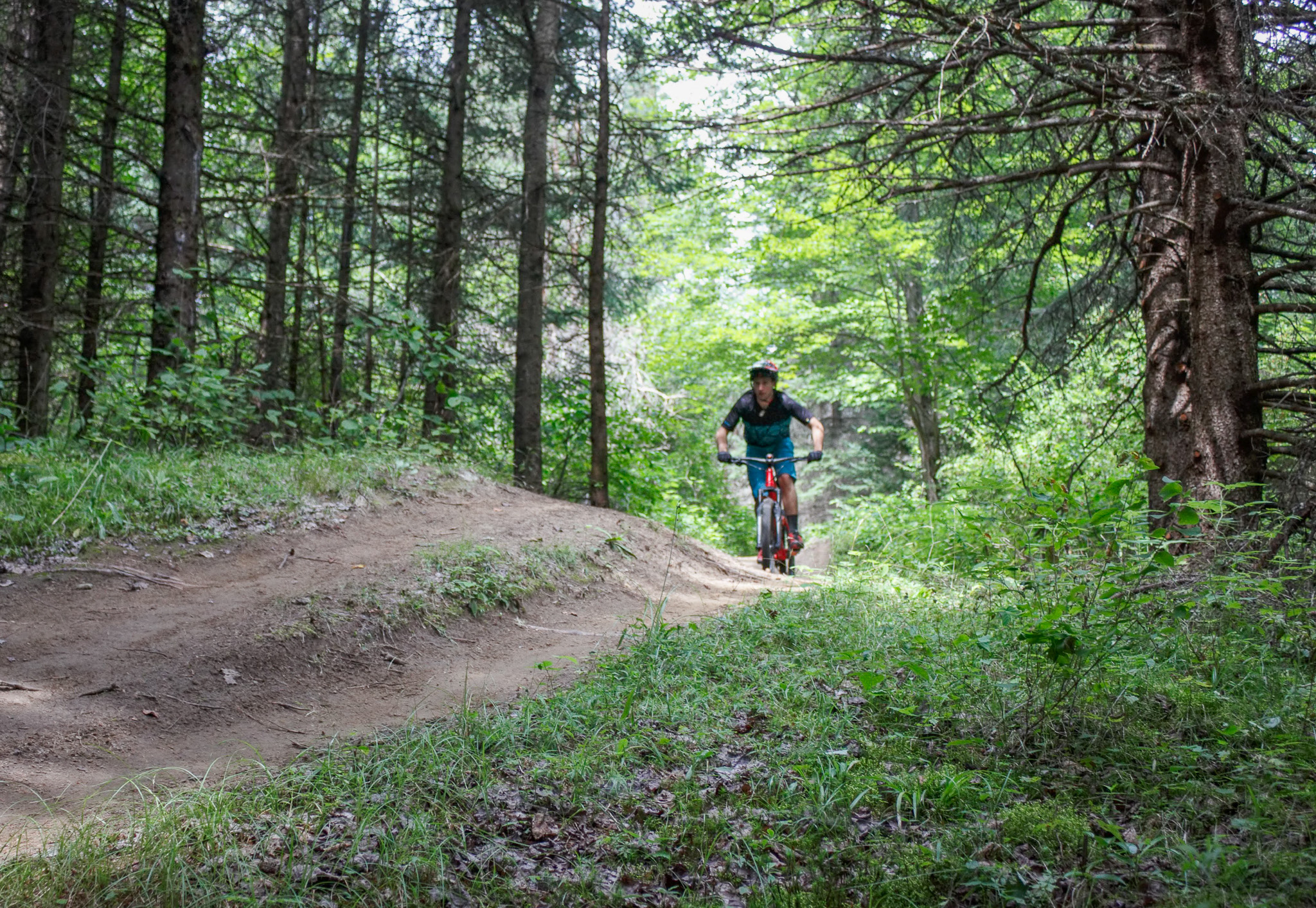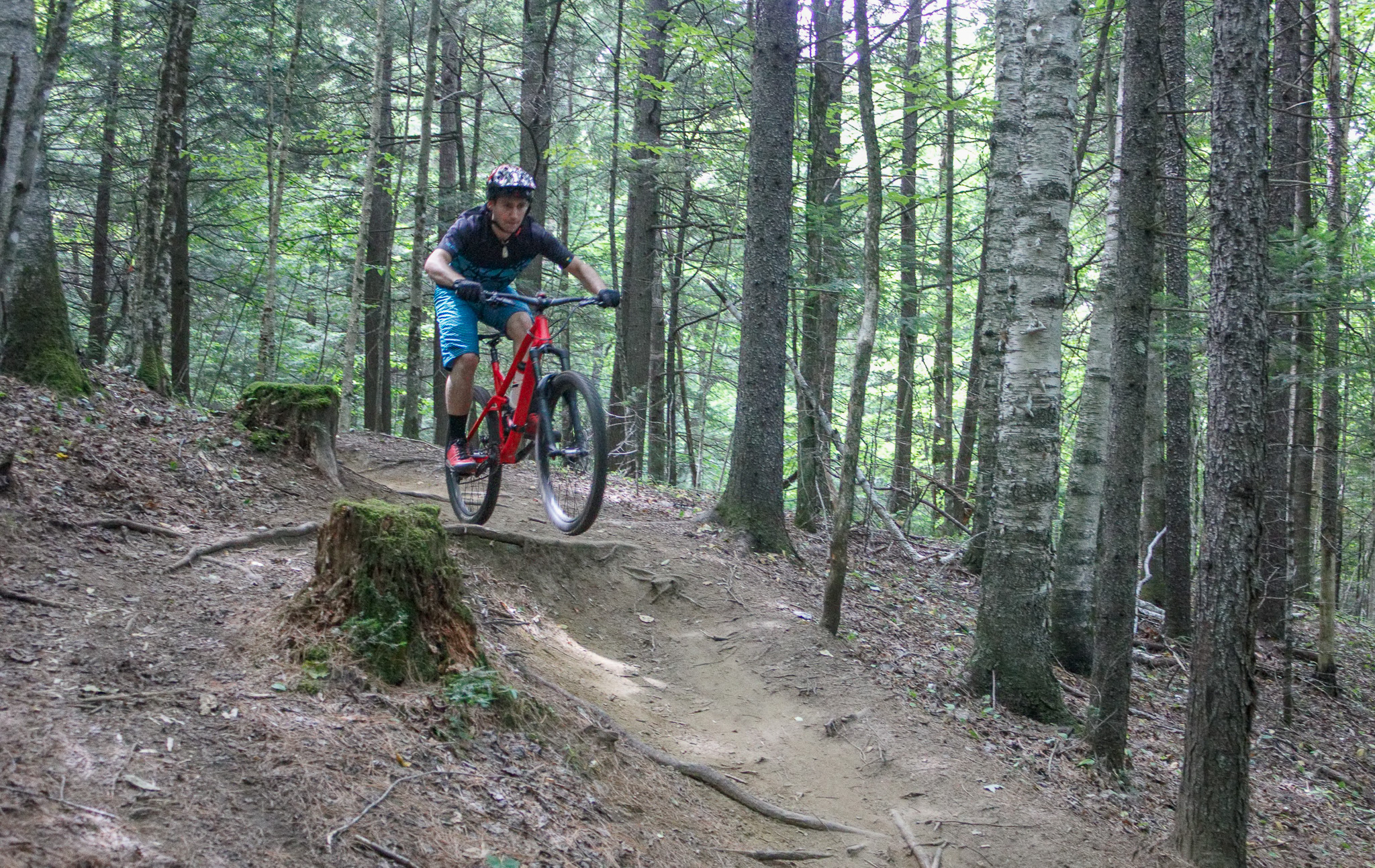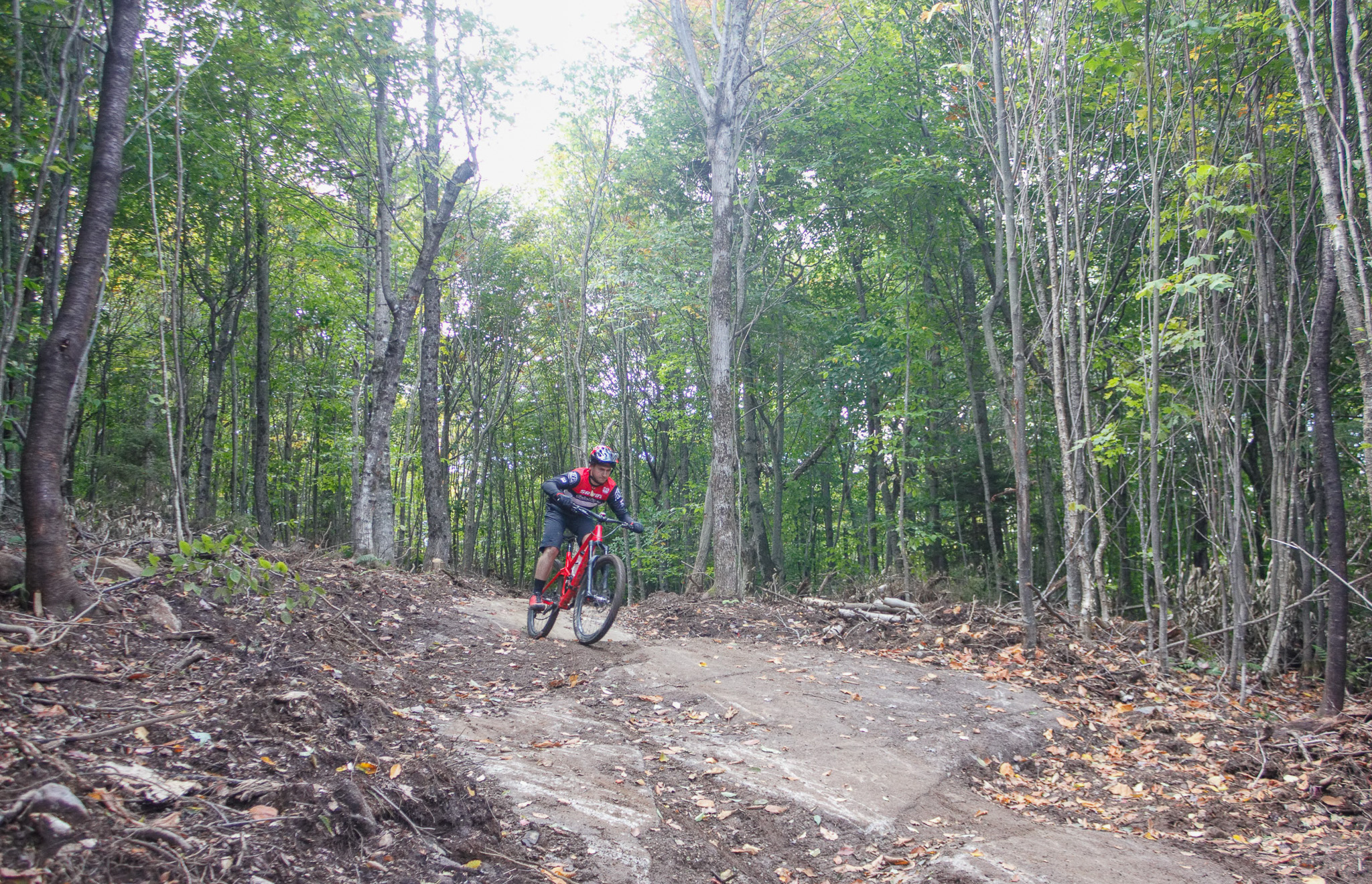Interest in mountain bikes has boomed over the past few years. While many are quick to point to the pandemic and more friendly machine-built trails driving interest in mountain biking, another reason is the bikes themselves. I can’t help but think how antiquated my 2013 Rocky Mountain Slayer is compared to my current Canyon Spectral. Today’s mountain bikes are simply much better than those of the past. Below are seven advancements pushing the popularity of mountain biking.

7 Advancements Pushing the Popularity of Mountain Biking
1. 1x Drivetrains
My Spectral features a 12-speed 1x drivetrain with a clutch rear derailleur, a vastly superior setup compared to the 20-speed 2x drivetrain found on my old Slayer. Today’s drivetrains offer crisper shifting and smoother operation, and require less tinkering and maintenance than those of the past. Thankfully, modern drivetrains have made annoyances like dropped chains and chain slap a thing of the past.
While I haven’t pulled the trigger on electronic shifting (yet), it’s becoming more and more common on mountain bikes. Electronic shifting allows for even faster, more precise gear changes, requires even less maintenance, and is cleaner looking—there are fewer cables cluttered around your handlebars.
2. Dropper Seat Posts
The dropper seat posts on today’s mountain bikes provide a leap in performance over the fixed aluminum seat post found on my old Rocky Mountain. With the push of a button, today’s riders can lower their seat (and their odds of going over the handlebars) when tackling steep features and technical terrain. Dropper posts get the seat out of the way and allow riders to easily shift their weight around and lower their center of gravity.
Electronic dropper posts allow riders to further fine-tune performance and keep handlebar clutter to a minimum.
3. Better Geometry
At first glance, both my present-day Canyon and decade-old Rocky Mountain look pretty similar. What you can’t tell just by glancing at the bikes is the huge improvement in geometry that has been made over the past 10 years—even the difference of a half-degree or a few millimeters can significantly change how a bike rides.
Today’s mountain bikes are longer, lower, and have a more forgiving ride than their predecessors. This, along with changes like wider bars, has resulted in bikes that are more stable, more predictable, and simply more fun to ride.
4. Wheel Sizes
These days, I fly effortlessly over obstacles at Borderland State Park that I used to cringe just thinking about. I’m a better rider now, but this is also thanks in large part to larger wheels. My Spectral features 27.5-inch wheels (compared to the 26-inch wheels found on my 2013 Slayer) that easily roll over rocks and roots which in the past hung up my older wheelset. They’re also faster! Something I appreciate when it’s time to drop the hammer.
I love my 27.5-inch wheels—to me, they offer the perfect blend of speed, acceleration, maneuverability, and playfulness—but many riders opt for even faster-rolling and better rough-terrain-performing 29-inch tires.

5. Tubeless Tires
Bigger wheels are great, but tubeless tires have really helped unlock their full potential. They’re pretty much standard on modern mountain bikes like my Canyon. Tubeless tires allow riders to run their tires at lower inflation pressures, which helps increase traction and improve ride quality.
The absence of tubes also means less weight, which is especially beneficial for rotational components, because it takes less energy to spin a lighter wheel. It also means no more pinch flats and significantly fewer flats overall. Or, more simply, more time riding my bike and less time fixing it.
6. Carbon Frames and Components
More and more mountain bikes are being made with carbon fiber, which is lighter, stiffer, stronger, and offers a better ride compared to my old Rocky Mountain’s aluminum frame. Carbon-framed bikes are even coming down in cost and rivaling the prices of aluminum frames.
While carbon frames are so commonplace nowadays, they’re almost old news. The hottest application of carbon fiber currently is wheels, which like carbon fiber frames, deliver stiff, strong, lightweight performance along with a comfortable ride. Back in the day, riders were hesitant to adopt carbon frames, much less wheels, fearing their durability. However, today you’ll find a whole genre of YouTube videos featuring riders trying their hardest to destroy carbon parts.
7. Reliability
I spent nearly as much time in the shop for repairs and parts for my Slayer in 2013 as I did when I was picking the bike out. Ten years ago, it seemed something was always breaking or in need of repair. From bleeding hydraulic disc brakes to truing wheels to adjusting shifting, maintenance was a big part (and expense) of mountain biking.
Conversely, today’s bikes require relatively little maintenance. If you keep them clean, lubed, and properly inflated (tires and suspension), they’re generally pretty problem-free.

Other Reasons for Mountain Biking’s Boom in Popularity
It’s not just better bikes that are attracting more mountain bikers. High-tech toys like GPS units and mobile apps are helping make mountain biking more accessible. For example, when I first got my Rocky Mountain Slayer, you either had to know someone, be willing to explore new locations, or lurk on internet chat rooms to hear about new trails. Even when you did find a new place to ride, the directions were murky at best. Today, you can download routes directly to your GPS or phone—getting you right to the good stuff.
Bike racks have also made a huge leap over the last decade. It’s so much easier to get your bike to the trailhead than it was before. To use my first roof rack, I needed to take the front wheel off my Slayer and use a thru-axle adapter. While it never happened to me, I had more than a few friends make it home only to discover that they left their front wheel back at the trailhead. Nowadays, bike racks are more secure and many will hold a bike without even touching the frame, much less requiring you to take the wheel off.
What Do You Think?
Do you have strong feelings about what’s pushing the popularity of mountain biking or is there a bike technology you couldn’t imagine living without? If so, share it in the comments below.
Mike Spadea
Mike began working at Eastern Mountain Sports when he was just 15 years old. There he met a community of mentors who helped nurture his love of nature and introduced him to various new outdoor activities. Today, Mike serves on his local conservation commission and continues to share his knowledge of the outdoors with others.




